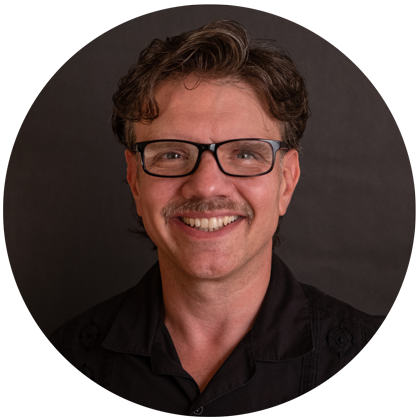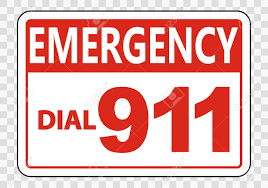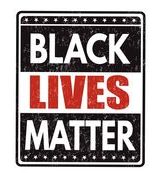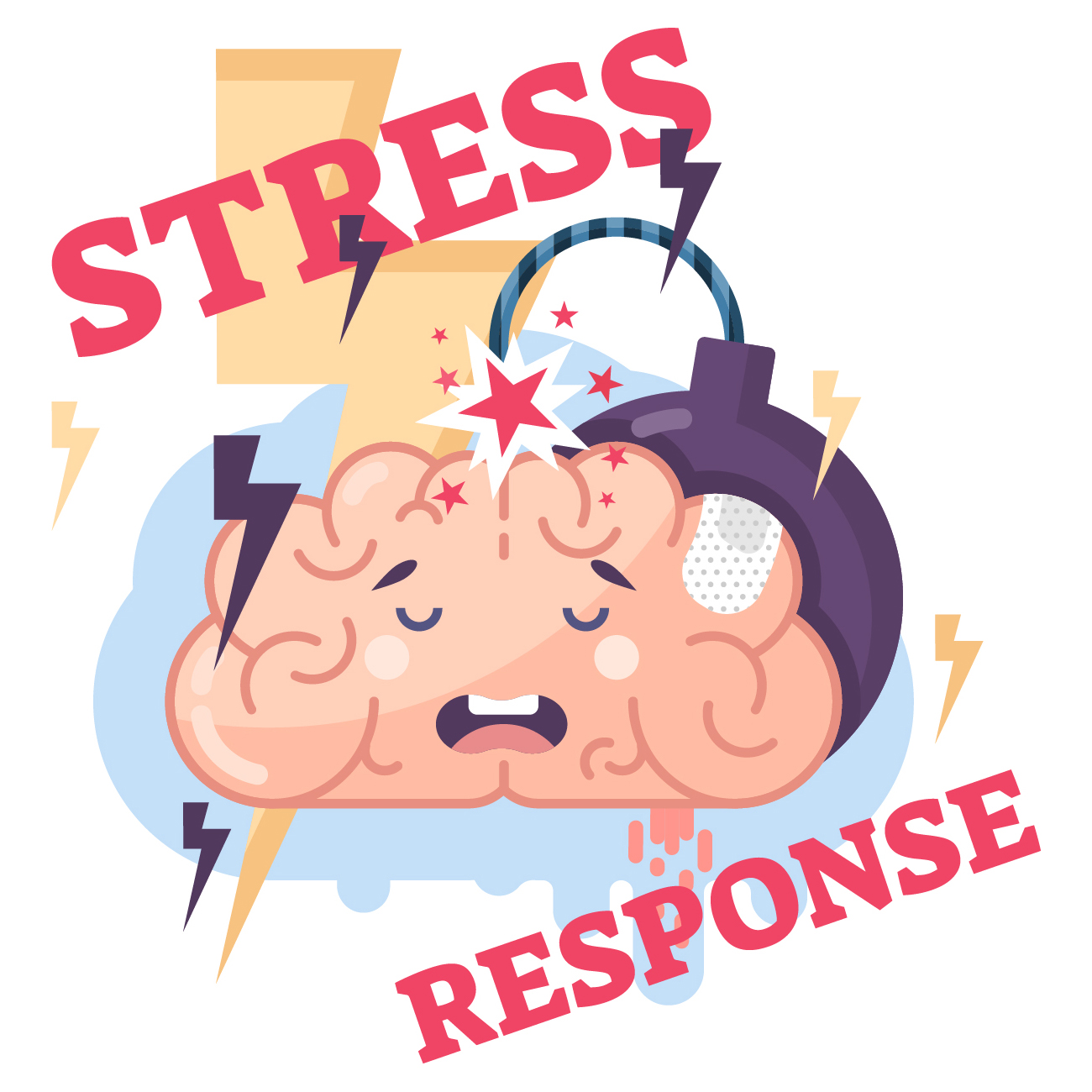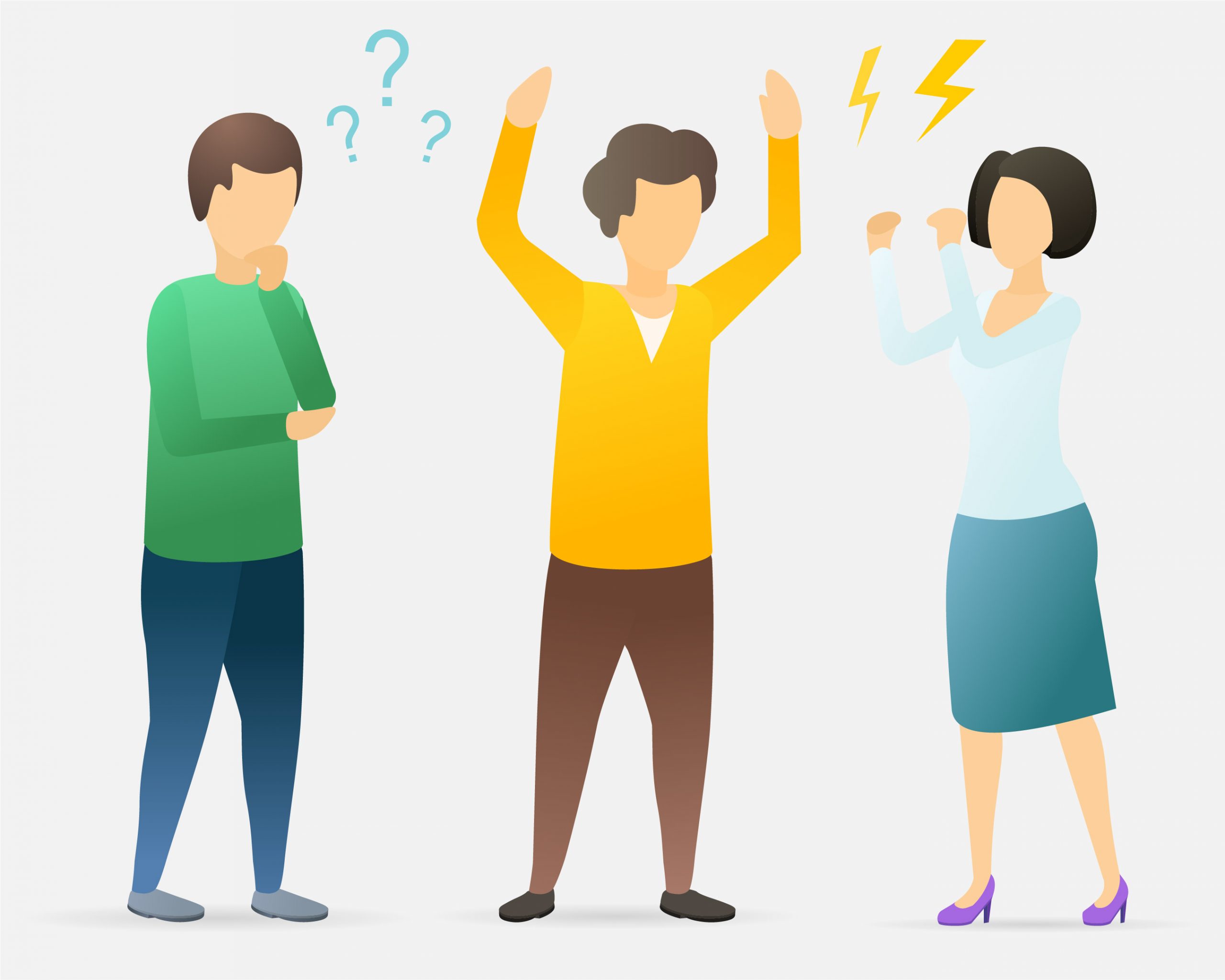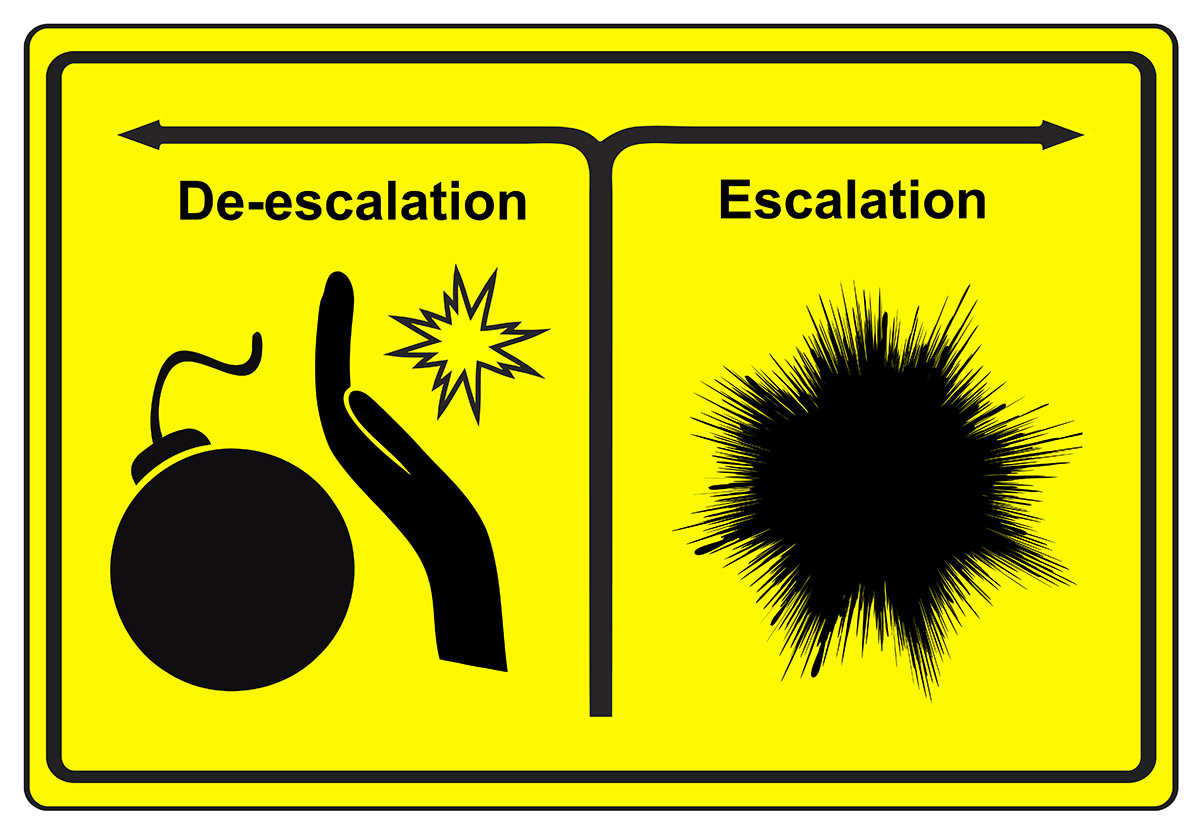Like almost all of us, my life has been altered in 2020 namely due the effects of the pandemic. The direct and indirect impacts of Covid 19 have been numerous for me. Notably, I am doing trainings & consultations almost completely remotely. One thing has not changed: I am regularly asked to do “De-escalation & Personal Safety” trainings for an abundance of people that are interacting with people with behavioral health concerns, either professionally or personally.
While the presentation of remote educational in-services is a notable tangible change for me and the people & organizations with whom I work, there are other changes happening as well. I appreciate that people have been willing to share with me some of there greatest concerns around safety, whether it applies to them or others around them. You see, I am comfortable talking about that which is often uncomfortable to discuss, and I trust that people see & hear that whenever they delve deep into an interaction with me.
Consequently, I appreciate whenever anyone in my in-services asks a difficult, challenging sort of question. One question that I’ve been accustomed to answering during my professional career is one that I’m getting with greater frequency in these past few months: Should I Call 911 or should I Not Call 911 in this situation …?
Again, this is a question that is worth asking and, realistically, has been worth asking for decades. Almost no one asked me this sort of question in most of my trainings when I began doing these sorts of in-services in the early 2000’s. Sure, I had a couple of individuals who felt brave enough during the training process to ask, but honestly, very few people would engage with me or others openly about this topic. This year is different and I am glad that I am being asked more about it. Hence my writing today.
“I AM A PROFESSIONAL – AND I AM SEROUSLY CONCERNED WITH CALLING 911. I AM AFRAID IT’LL MAKE IT WORSE”
I got this question in a Zoom training last week. Again, the frequency and intensity of this question has been increasing in my recent in-services. Yes, I heard this sort of question occasionally the last few years with the consistency of this question being asked of me increasing noticeably this year and for good reason.
With heightened awareness of 911 calls leading to deadly outcomes in a number of high profile police interactions – Elijah McClain, George Floyd, Daniel Prude as recent examples, let alone the long list in recent years including Tanisha Anderson and, locally here in Seattle, Charleena Lyles – it is extremely important for people to consider how best to address reporting concerns to police, whether they be Behavioral Health issue or petty crimes. This is on top of countless other examples (such as the murder of Breonna Taylor in her home as a result of a “no knock” warrant and video examples of police escalating situations involving non-violent protesters in the last few months) leads to a crisis of confidence in how law enforcement approaches situations that otherwise could have been avoided or managed without harm to the public; a public to whom they are supposed to be protecting and serving.
In short, while it is extremely unfortunate that we are dealing with this increased awareness of situations where police are serving as first responders to a multitude of concerns of the human condition, the reality is that this issue has been present for years. We have simply become more aware of these escalated situations and questionable tactics employed by select police officers, & their departments in general, as a result of the proliferation of video and reporting that is magnifying the scrutiny of emergency response in our communities.
During my professional career that has had varying levels of overlap with law enforcement professionals due to my work in crisis intervention and response positions as a clinician, I can say that I have seen the entire range of police responses: from ones that were skillfully managed to ensure de-escalation and safety for all involved, to ones that were escalated the moment police began to interact with the individual who was experiencing a behavioral health emergency. There is not a uniformity and consistency to how police may respond to a situation. When you add in systemic racism and bias in policing and the confusion, disorganization, and potential unpredictability of someone experiencing a mental health crisis there are a lot of variables that can negatively impact the success of this interaction.
Consequently, the question of calling the police, notably calling 911 because of a minor crime or unusual behavior (whether involving or exacerbated by substance use or not) is one that people ought to consider with greater depth if they have not yet done so. I’ll add, it’s especially important for white people to open up honestly about this question and admit to what they do not know, specifically as it relates to the experiences of persons of color and their experiences with law enforcement.
“I DON’T WANT TO CALL 911 … I DON’T THINK ANY OF US WANT 911 CALLED … CAN WE FIGURE THIS OUT? WE NEED TO BE SAFE.”
This quote come from an informal debriefing from over a year ago. For the sake of confidentiality, I will address this situation in generalities.
I was asked by a long-time professional colleague to informally debrief a potentially dangerous situation that she had just experienced. The outcome was a positive one, but it was still one that was very emotionally charged and I applauded her for reaching out to me to debrief.
Here was her situation: She was working in clinical capacity as a counselor in a “residential” sort of situation and she was alerted to two clients in conflict at this residence’s common area. She carefully moved toward the two people who were in a verbal argument. Threats were being made and, while there was not a weapon present, the reality was that either of the verbal combatants had materials around that could be used as a weapon at any given moment.
The clinician used her usual verbal and situational skills to attempt to de-escalate the situation. However, the verbal threats between the two people escalated and they were not seemingly ceasing, despite attempts to re-direct and de-escalate by the clinician.
The clinician was seemingly patient and spoke intermittently and selectively. She wanted to allow the two clients to “vent” their frustrations and hoped it would subside and calm. This did not occur. Instead, the situation was escalating. To summarize her report, since the verbal threats were escalating and the tangible risk of violence was high (due to the proximity of potential weapons), she offered the following (paraphrased):
“Hey, we are all People of Color and I know none of us wants the cops called. (Pause) What can we do now so that I do not have to call the cops? (Pause) I don’t want to call them, but if we can’t calm this down, I gotta call them.”
While this did not lead everyone to immediately calm down, it did help de-escalate the situation. Essentially, the clinician gave a “big picture” insight that the two verbal combatants were not able to see with apparent “tunnel vision” in the heat of the moment.
The clinician noted that both clients were still upset after she made this statement, but they were able to follow her verbal direction to separate. The statement served a purpose: It was life a verbal mirror that let these two people know what others were seeing from the reflection of this interaction. The subsequent separation that the two agitated clients equally participated in (going separate ways) allowed both upset people the time and space to calm down enough to not escalate it further. 911 was never called. Police never responded, as there was no need.
When I was debriefing with the clinician, she was visibly upset. I noted “You did great!” and she said she wasn’t so sure. I let her know that I thought that she found a way to “name” the situation in a compassionate manner aimed at de-escalation and that she avoided making a “threat” to call 911. Instead, she found a way to talk about the potential 911 call in order to facilitate a shift in perspective: She truly believed that all involved (including her) did not want police to respond to this situation. She named it and by doing so she let all involved know that there was a seriousness to what was unfolding. If she had not have named her experience and what she was witnessing and the potential “next steps” for separation (“taking a break”), we do not know if the same outcome would have occurred.
TAKEAWAY CONSIDERATIONS
As I communicated to my training group last week, the big takeaway is this: Have you considered a way to talk about the potential 911 call in a way that can help lead to de-escalation of the situation; notably while being careful to not use the potential 911 call as a threat to those involved?
Honestly, I do not believe that most people have given this question much thought. I invite you to do so. Please make an effort to consider when & where you might say this. What would you say? How would you say it (e.g, not being too loud or sounding punitive or threatening)?
If you are struggling with this, I invite you to reach out to someone – – you are welcome to email me.
I am also going to list a few additional considerations for how you may want to prepare your approach to a potential 911 call, if you need to make one.
ADDITIONAL CONSIDERATIONS IF YOU MUST CALL 911
I provide a lot of training and clinical consultation for a wide range of people, so I may have specific insights to offer people facing unique issues that go beyond what I list here. That being said, there are some general insights and considerations when someone is calling 911 & police are the First Responders to a behavioral health emergency (as opposed to a First Responder who is not a uniformed police officer, like the ones provided in the CAHOOTS program in Eugene, OR) to consider:
- How you communicate with the 911 Dispatcher can help influence the direction of the initial interaction. For example:
- When first on the call with the Dispatcher, consider saying something like “I’d like Crisis Intervention Trained professionals responding to the scene/situation.” This immediately alerts the dispatchers and the first responders that this is a Behavioral Emergency more than a criminal situation. Hopefully, in the jurisdiction that is responding, officers with extensive, 40-hours or more of “Crisis Intervention Training” (CIT)*** are the responders.
- When on the call with the Dispatcher, please be consistent with your messaging and your descriptions of events. Namely, please be careful to:
- avoid “catastrophizing” a situation
- avoid using words that “speculate” about a threat
- avoid using “emotional” terms more than “descriptive” ones
- When police are present on the scene, consider how best to proceed as a bystander:
- Consider how best to keep a Safe Distance, while also being an Active Bystander, in that you can still serve as a Witness to what is going on.
- Be consistent with your language when interacting with Police in person that you want to see this situation “De-escalated” and that you want everyone involved to be safe.
- Encourage the responding Law Enforcement officers to communicate with you if they need more information. Let them know that you want to give everyone involved the “Benefit of the Doubt” and if the officers could benefit from more information, you want to encourage them to pause their interaction with the agitated individual to return to talk with you (or others around would can offer support, insights, and other potentially valuable information to lead to a safe resolution of this situation) for the sake of De-escalation.
While none of these items cannot ensure that there will be a safe, non-violent, de-escalation presented by the First Responding officers, my experience indicates that these approaches align with our greatest goals to “Do No Harm” and to help serve and protect any individuals impacted by a potentially dangerous behavioral situation.
Please remember: the person who is “acting out” behaviorally is a vulnerable individual. It may be counter-intuitive to see that in the moment of their hostility, yet it important to remember that they are a human being “having a hard time” (I invite this way of thinking, as opposed to thinking “this person is giving Me a hard time”). If we can safely get this person to help, that will likely help all involved – including our community. Again, it is often hard to acknowledge this in the moment, that is why it is important to consider this as part of preparation and desire for preventative measures, rather than “interventions” that may make the situation worse.
I wish you all well with navigating these situations. As usual, if you have questions or comments, I welcome them.
{***If you are unfamiliar with CIT programs locally and internationally, I encourage you to check out www.citinternational.org or your local state branch of CIT. I’ll add that I have been an Advisory Board member for the WA State Criminal Justice Training’s CIT program since 2016, and have done local and regional presentations dating back more than a decade in conjunction with this program.***}
